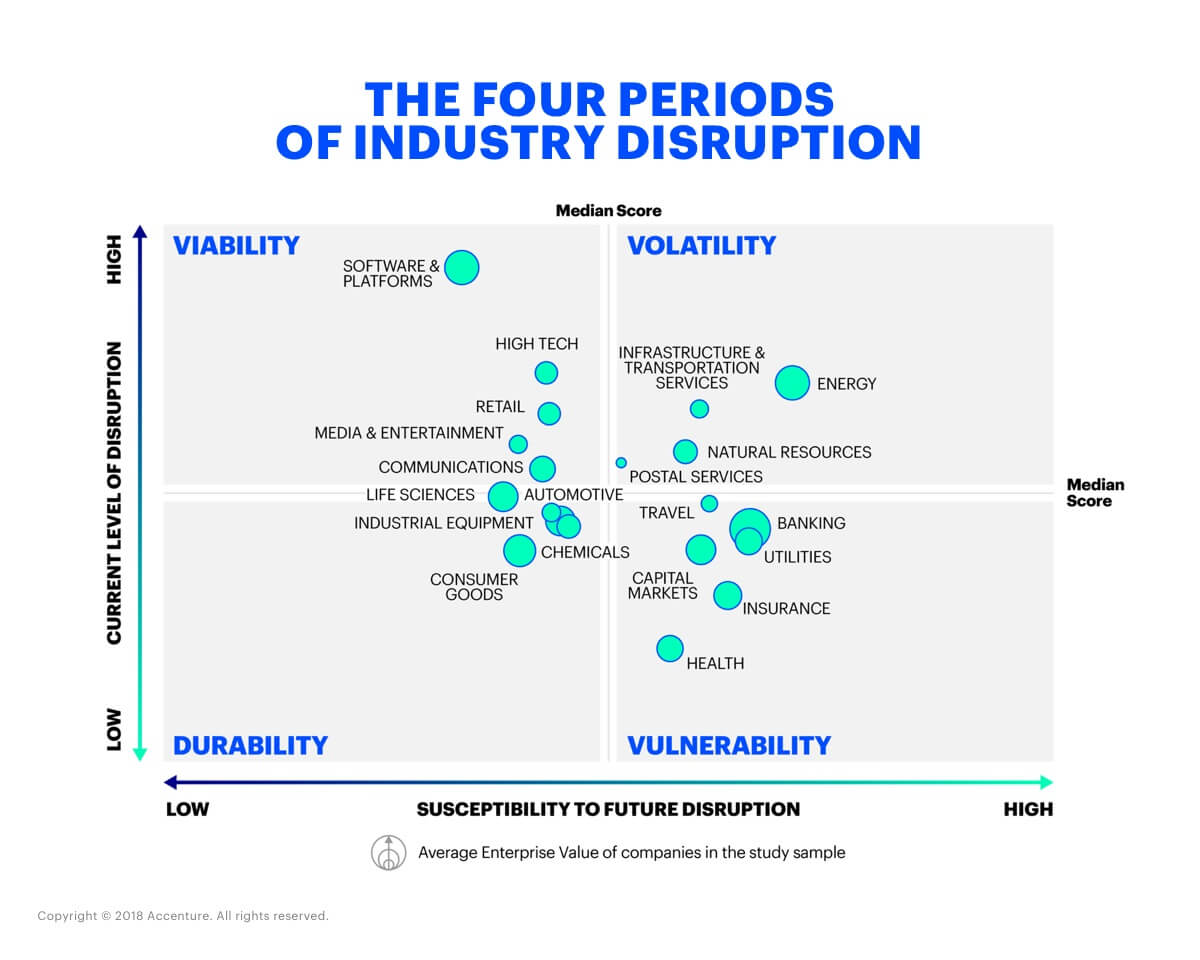
Disruption is inevitable so it’s important to prepare | Source: Pexels
Strategies to triumph over the four periods of industry disruption
DISRUPTION is a fact of life and businesses need to prepare to deal with it to avoid being rendered obsolete.
In fact, Accenture surveyed 3,600 companies with annual revenues of at least US$100 million in 82 countries and found that 63 percent of companies currently face high levels of disruption and 44 percent show severe signs of susceptibility to future disruption.
The study also revealed that, rather than being a random event beyond the control of business leaders, disruption has a pattern that can be identified, understood and prepared for.

The four periods of disruption by Accenture’s Disruptability Index | Source: Accenture/Newsroom
Study your industry to determine the current state of disruption and the susceptibility to future disruption, and find out the period of industry disruption your business resonates with the most.
Banking, insurance, healthcare, travel, for example, are vulnerable for obvious reasons.
But look at the automotive, life sciences, or the industrial equipment sectors and you’ll see a shift away from the ‘durable stage’, showing the potential for them to become vulnerable, volatile, or tap new opportunities to turn into something more viable in the future.
Preparing for the future, according to the report, requires a strategic response based on the period of industry disruption:
Durability
At this stage, disruption is evident but not life-threatening for businesses. Out of the 20 industry sectors surveyed by Accenture, 19 percent of companies fall within this segment.
The ideal strategic response should be for you to reinvent your legacy business by maintaining cost leadership and making your key offerings more relevant to your customers.
Vulnerability
The current level of disruption, at this stage, is moderate – however, the study says that incumbents are susceptible to future disruption, due to structural productivity challenges such as high labor costs.
Almost one-fifth of the industries covered by the survey fall within this segment and include insurance, retail, and convenience retail.
To win, your company must make your legacy businesses more productive and position yourself to develop and leverage future innovations.
Volatility
Businesses in this stage find themselves at a place where violent and sudden disruptions are a way of life.
A quarter of the industries studied by Accenture fall within this category and include technology, advertising, and transportation services.
According to the study, the only way to survive is by decisively but wisely changing the current course of your business.
You need to radically transform your core business while scaling new businesses. However, you need to be careful and ensure you pace yourself appropriately. Go too fast, and you could burn your resources without much impact. Go too slow and you could be rendered obsolete.
Viability
Companies in this space are in a constant battle for a competitive advantage and constantly battling with new disruptors.
Accenture’s study found that 37 percent of industries fall within this segment – such as software and platform providers, telecommunications, media, and high-tech.
It is here that your business needs to embrace a constant state of innovation. You need to increase the penetration of innovative offerings with existing customers and aggressively expand into adjacent or unchartered markets by leveraging the strength of their reinvigorated and innovation-enabled core business.
READ MORE
- Ethical AI: The renewed importance of safeguarding data and customer privacy in Generative AI applications
- How Japan balances AI-driven opportunities with cybersecurity needs
- Deploying SASE: Benchmarking your approach
- Insurance everywhere all at once: the digital transformation of the APAC insurance industry
- Google parent Alphabet eyes HubSpot: A potential acquisition shaping the future of CRM


